Surface Water | Not A Cut & Dry Issue
 24 August 2021
24 August 2021 
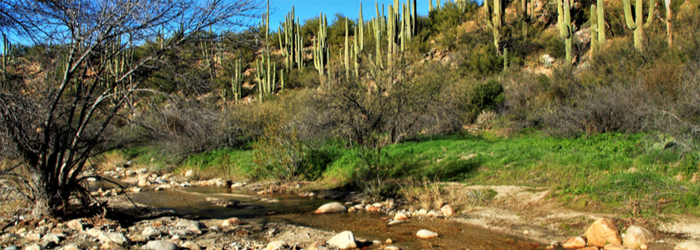
Surface Water | Not A Cut & Dry Issue
After weeks of monsoon rains, you may have noticed a lot of puddles and dirt in your neighborhood. Or you may have noticed washouts as you skidded on loose dirt rounding a corner. Some of the water may have naturally flowed from small washes between homes, but some may have flowed from someone else's property and onto yours. What's a homeowner to do?
Here are some basics regarding how drainage is determined in planning for homes and communities:
Drainage | Permits, Plans & Options
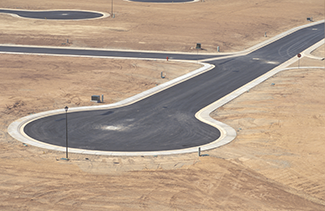
Before your home was built, the developer had the area's natural drainage assessed. The flow of water was tracked as to where it went and the volume of flow. The developer then created a drainage plan that varied little from the natural flow and submitted it for review and approval by the municipality. Once the development was complete, the developer worked with the municipality to ensure the flows were engineered as they naturally were prior to development. That plan may include traditional curbs and walls that allow flow from the backyard to the front yard and into the street.
Permitting and codes take considerable care in protecting homes on any property. In general, the rules state as they do in the City of Scottsdale, "All habitable structures must be designed so they will not be flooded up to 100 years event."
Most municipality codes do not allow stormwater or drainage to flow from one property to another as the water makes its way to the street. Homeowners and commercial property owners are required to keep their lots maintained so the water flows away from others and to the street or whatever drainage system the property is designated. For instance, In a big subdivision, you will see large ditch areas that look like parks. They are actually designed for water retention. The houses in that neighborhood siphon water away through washes and ditches to the main drainage area.
Here are some basics regarding your responsibility when it comes to your property's drainage:
As a homeowner, you have the responsibility of minimizing erosion from a sediment perspective.
If your front yard is bare dirt, without gravel, landscape, or native growth, that is considered a high-erosion environment, and that is a problem.
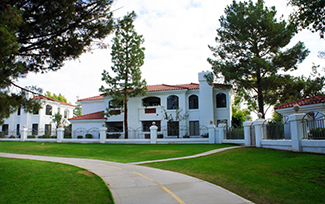
If a property owner wants to change the direction of drainage or make improvements to the home that affects the original drainage plan, a revised drainage plan must be submitted for approval before work begins. The key to making a successful change is that the adjustments do not affect another property upstream or downstream.
Rosie was recently asked by a homeowner on Piestewa Peak who had experienced some extraordinary flooding to come out fix the problem. The homeowner had a plan that refused to accept responsibility for potential property damage downstream from him. Rosie refused to do the work.
It is advisable to seek a professional like a civil engineer to access what changes can be made without violating code. Your local county or city has a drainage department that should be able to consult with you as well.
Drainage Options
If the rainfall is so heavy that your property floods, you may need to use a sump pump to redirect the water so it does not flow to another property. You can buy a sump pump or hire a professional such as Rosie-Certified Partner Arizona Foundation Solutions to do it for you. Sump pumping uses a motor and pump connected to a hose running to the basin where the pump is placed. The pump sends water through the hose and out to your designated drain area. Call the county to find out where your designated drainage area is located. Don't assume it's the street.
Water harvesting opportunities are a good option for finding a use for excess water. Water harvesting stores rainwater in rain barrels or micro ponds to be used for plant growth.
Some municipalities offer incentives for such drainage options. Check with yours.
The Common Enemy Rule: Protecting Your Own Land
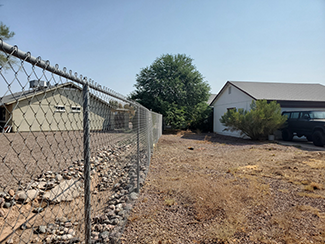
What happens if your neighbor's drainage runs onto your property?
Arizona applies the “common enemy rule” to surface water disputes. In layman’s terms, every landowner has the right to protect themself against surface water however they choose. Therefore, no one has a right against other landowners, and no one is liable to anyone else for causing damage by alterations to the drainage of surface water.
Arizona attorney's William A. Fischbach and Timothy C. Bode, Tiffany & Bosco, P.A., further explain in non-legalese how this pertains to stormwater.
"Arizona is a desert landscape and many of its soils are highly erodible. Consequently, Arizona rains and monsoon storms can cause substantial damage to property. To mitigate these issues, many landowners modify the property to divert or change the flow of water entering their property. While these improvements may seem like a common-sense solution, if landowners fail to comply with applicable laws, they may face serious legal consequences, including civil liability and daily regulatory fines. To avoid these potential consequences, landowners should be aware of relevant laws governing rainwater in Arizona.
Generally, there are three types of water on land:
- Surface water
- Stream water
- and floodwater.
Surface water is water falling on and naturally spreading over lands, like rain or snowmelt.
Stream water is surface water that has joined a natural watercourse, like a stream or a dry wash that fills irregularly during heavy rains.
Flood water is errant water that has escaped from a natural watercourse and flows over adjoining lands in no regular channel. Although floodwater may make a temporary channel or follow some natural channel, that does not affect its character as flood water or make the course it follows a natural watercourse.
Under Arizona law, surface water and flood water are considered a "common enemy" to all landowners. As a result, there is no duty to receive surface water coming from another's land.
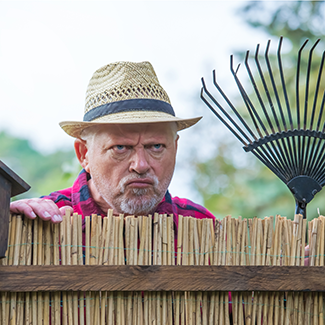 Landowners may use embankments and other devices to protect their land from surface water without liability to adjacent landowners.
Landowners may use embankments and other devices to protect their land from surface water without liability to adjacent landowners.- A landowner may also use ditches and other means to divert surface water into a watercourse without liability to an adjacent landowner, even if this causes the water flow to accelerate and increase.
- Similarly, a landowner may embank and divert flood water without liability to an adjacent landowner. Once surface water has joined a watercourse, a landowner may not obstruct the flow of that watercourse.
- However, a landowner may divert or change the course of a watercourse flowing through his land, provided he returns it to its original or natural channel before it reaches the land of an adjacent owner. There is a little-known statute, A.R.S. § 48-3613, that prohibits anyone from "diverting, retarding, or obstructing" a watercourse without first seeking authorization from the applicable county flood control district. Any party that is or may be damaged by the diversion, retardation, or obstruction of a watercourse can bring an action for damages and obtain an award of costs and attorneys' fees. The county may also assess financial penalties for each day the violation is not cured per A.R.S. § 48-3615(B)-(C). Most urban Arizonans need not worry about these issues because drainage infrastructure is already in place. More often than not, these issues affect rural or agricultural properties."
If you have a problem with water entering your property from another property, be sure to document it with a lot of pictures. If it comes down to a lawsuit, the burden is on the homeowner to prove damages.
Cleaning Up The Mess
Who cleans up the sediment that is pushed into the street?
If you live in an HOA community, the HOA is responsible for keeping the streets free of storm debris. Otherwise, the municipalities will typically send out sweepers to clear the roadways.
But there is a caveat. The homeowner must clear the street if the runoff comes from their property.
Plan Ahead
One problem in Arizona is a neighbor could embark on a landscaping or grading change to their property that doesn't appear problematic, until that rain event 3 or 4 years later.....at that time the only responsible thing to do is undo the problem. This could involve removing mature landscaping and hardscape, modifying drainage patterns and starting all over again. Save yourself the future potential problem and consult a civil engineer drainage expert ahead of time. It does rain in Arizona. It does flood in Arizona.
Plan ahead. Don't just go with the flow and hope for the best.
###
Podcast
When developing raw land, the first thing to do is develop a drainage plan. However, after that land is developed, changes occur that can impact that original drainage plan; these changes can lead to problems draining surface water. Tune-in as we discuss how this disruption to the original drainage plan happens and why there's not an easy solution. Plus, Romey's notes from The Arizona Water Law Conference including a water diversion plan to move flood water to parts of the West.
Photo Credit
- Shutterstock
RELATED CONTENT:
- AZ Dept. of Water Resources | Water Conservation Tips for Arizona Residents
- Blog: Irrigation: The Backbone Of A Healthy Landscape
- Blog: Home Water Audits
- Blog: Central Arizona Project Canal: Arizona's Source For 35% Of Its Water Resources
- KTAR Blog: Five Low-Water Trees To Provide Shade For Your Arizona Home
- DIY FAQ: Water Conservation in Arizona
- DIY FAQ: How Can I Tell If My Landscaping Plants Are A Low Water Variety?
- DIY FAQ: Tips For Setting Up Your Drip Irrigation System
- Podcast: Plants That Love Arizona Too Much
Print this page
recent post
- Duck, Duck, Duct! How Often Should Ductwork Be Cleaned?
- Vinyl vs. Fiberglass Windows: Which Is The Better Choice Of Replacement Window?
- We May Be The Grand Canyon State, But The Rocky Mountains Are Important For Arizona
- Welcome to Arizona! Things A Newbie to Arizona Should Know
- The Pros & Cons of Buying A Flipped House
- Getting In On The Ground Floor
- Why It’s More Critical Than Ever To Get Your AC Serviced Before Summer
- The Reality of Remodeling
- What To Look For When Comparing Your Roofing Quotes
- What To Expect When Buying New Windows & Doors
